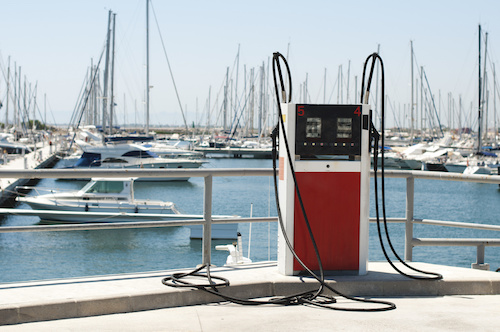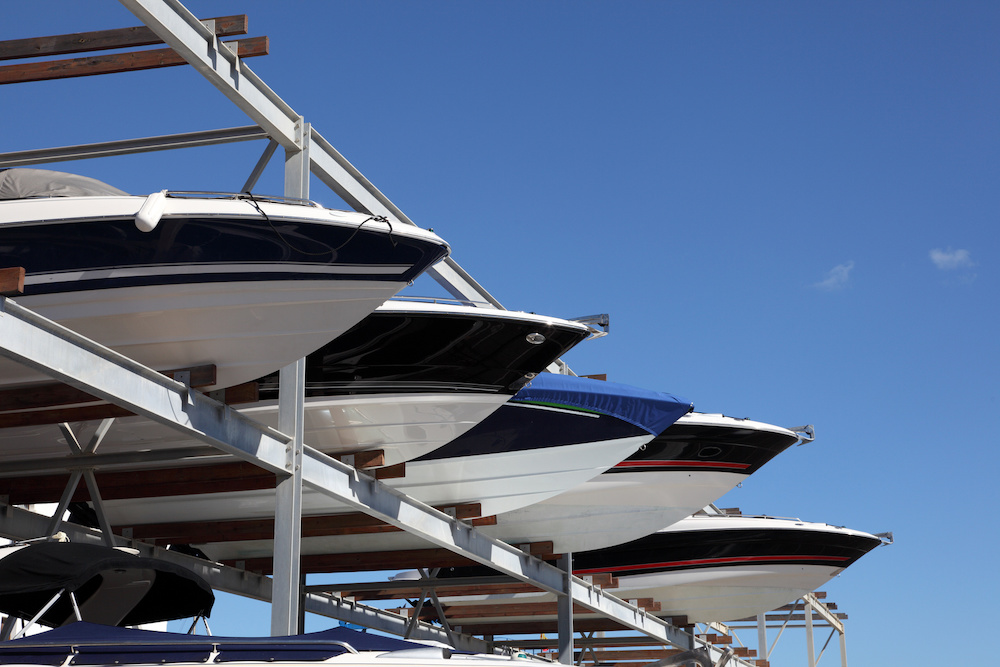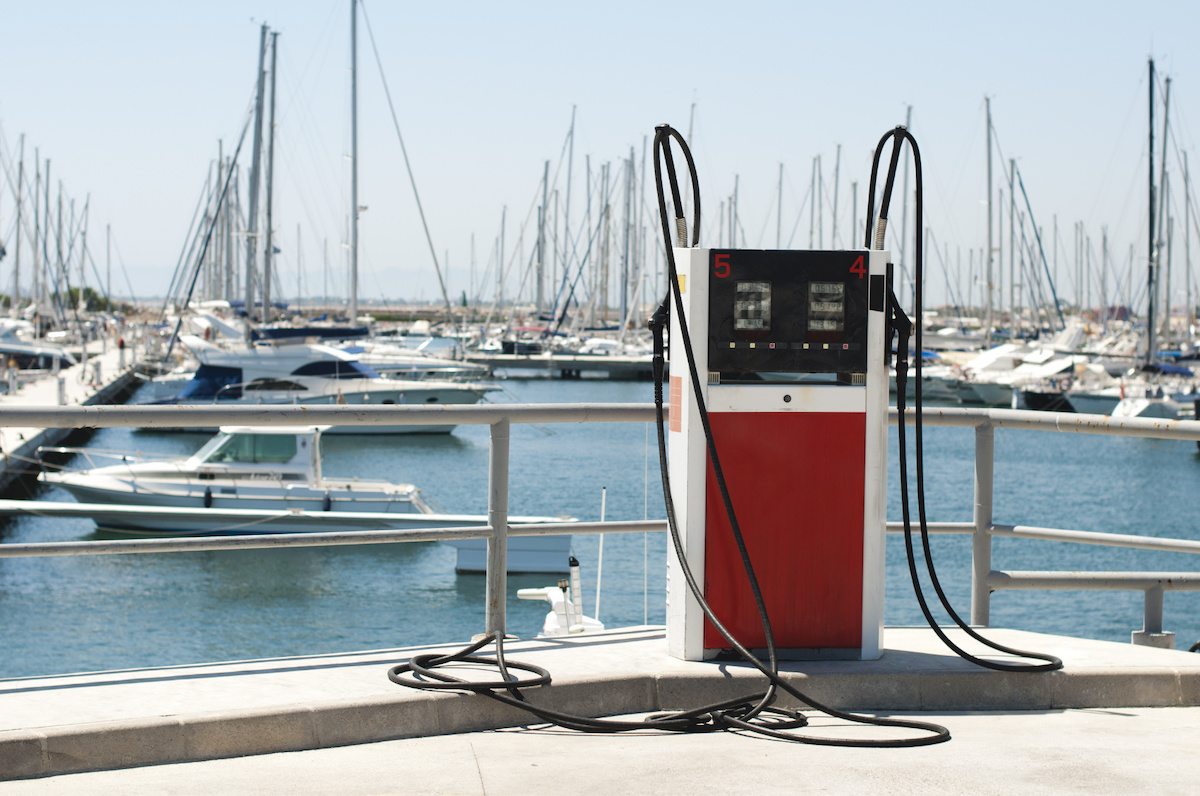Proper fuel treatment is a key element of any long-term boat storage preparation plan. When handled correctly, starting your boat next season can be as simple as turning the ignition key. Neglect of the fuel system, however, can cause problems both inconvenient and expensive.
How to Treat Boat Fuel for Long-Term Storage
- Plan your late-season boating trip to use up most of the current fuel.
- Fill the tank with fresh fuel so it's almost full.
- Be sure to use gasoline that does not contain ethanol.
- As you fill the tank for storage, add a marine-specific fuel stabilizer additive.
- Follow all instructions outlined on the fuel stabilizer product.
- Next, give the boat a short run on the water to distribute the fuel.
- When next season comes along, go boating right away with the stabilized fuel.
Filling the Tank
Marine engine manufacturers and technicians advise storing any boat with the fuel tank almost full, leaving just a little capacity to accommodate expansion of the fuel if the temperature warms. Filling the tank displaces any air in the tank and eliminates the opportunity for condensation to form inside the tank while the boat is being stored. This can occur if the boat is stored outdoors or in an unheated building.
The normal diurnal cycle of rising and falling temperatures—cooler in the evening and warmer during the day—and the fluctuations in temperature in many climates over a six-month off-season, cause any air left in the fuel tank to expand and contract. The tank “breathes” though its vent, and draws in air that is often very damp in the winter months. The moisture in that air can be absorbed by the fuel if it is an ethanol blend (E10) or condense on the sides of the tank, especially if the tank is metal. In either case you could be left with water in the bottom of the fuel tank come spring, which can foul the entire fuel system, cause the formation of deposits or corrosion in the bottom of the tank, and other issues.
Chevron has produced a video that illustrates the formation of condensation in the fuel tank and addresses the issues boaters need to know when storing their boats over the winter or off the water for an extended period of time.

Stabilizing the Fuel
You want to store your boat with fresh fuel that has been treated with a quality fuel stabilizer additive. The trick here is to plan your late-season boating so that you use up most of the fuel in the boat’s tank, and then fill it with fresh fuel just before it’s prepared for storage.
- Use gasoline that does not contain ethanol if that product is available where you live.
- As you fill the fuel tank for storage, add a marine-specific fuel stabilizer additive to the fuel following the instructions on the bottle.
- Next give the boat a short run on the water to get that treated fuel distributed throughout the fuel system.
This is especially important for boats powered by gasoline outboard, sterndrive or inboard engines equipped with a carburetor, rather than fuel injection. Untreated fuel left in carburetors can quickly oxidize and leave behind deposits that can cause headaches next season. In fact modern gasoline, especially gas that contains ethanol, can begin to go sour in just a few weeks. It’s a good practice to stabilize boat fuel all season. If you have a smaller boat with a portable tank, use that to mix stabilized fuel and run it through the motor.
Come next season you can start boating again with the stabilized fuel that’s in the boat. Do check your owner’s manual for the long-term storage routine specified for your engine, and follow those instructions.
Read Next: How to Winterize Your Boat
You Might Also Like:
- Marine Engine Maintenance
- Basic Boat Maintenance
- Boat Storage: What Are My Options?
- Spring Start-Up Checklist
- Find the Right Boat for Your Lifestyle
